#m1917 tank
Text

the americans designing the six ton m1917 (colorized) - hetamyu shenanigans
below cut: local amateur military historian tells you about the model m1917
The Model M1917 6-ton light tank ("6-ton special tractor") was the first mass-produced tank by the United States. When the American Expeditionary Force made it to Europe by April 1917, they were not in possession of any tanks. The American forces would be loaned French Renault FT tanks and British Mk.V tanks early on, but soon the US would negotiate with the French government to obtain a license to produce the Renault FT (known posthumously as the Renault FT-17, etc.). This license to produce the Renault would soon become a near-copy reproduction, the M1917*. Initially, the US Government would place an order for 4,440 of these light tanks.
Unfortunately, only 950 would be produced before the order was canceled. Of these 950, only 64 would be completed by or before the end of World War I. Of these only two would be sent to France, arriving nine days after the armistice of November 20, 1918. Eight more arrived belatedly in December. No M1917s would ever see active combat service but would find uses elsewhere, such as in tanker academies in France, the United States, and Canada, among other things.
*Not to be confused with several other pieces of US equipment bearing the same designation (i.e., the M1917 steel helmet, M1917 Service Uniform, or M1917 trench boots).
Further Reading If Interested:
[src: 1 | 2 | 3 ]
#hetalia#historical hetalia#aph america#hws america#alfred f jones#hetamyu#gremlin shitpost#gremlin tankposting#gremlin military history
157 notes
·
View notes
Text


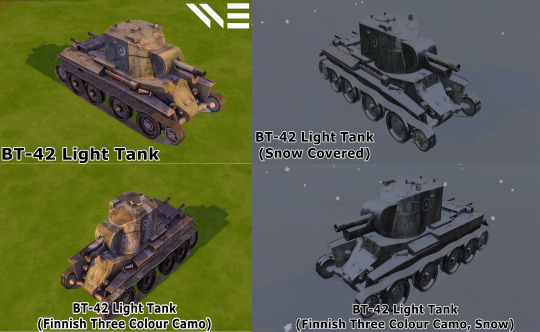








Finnish Army WW2 Light Tanks
One Of My Patron Request and Also Part Of Great Projects about Weapons and Heavy Machinery That Used During Winter War (1939-1940) & Continuation War (1941-1944) About The Finland Wars Against Soviet During during early and later Stages Of World War 2. For Your Informations Finnish Army During WW2 Heavy Machinery During Winter Wars Are Rely On Captured Soviets Tanks, Obsolete WW1 Products Or Licensed Products From Allied Countries
Disclaimer:Due Heavy Censorship Regarding Swastika Usage in Western Society, The Details of The Tanks Are Replaced With Roundel Instead of Finnish Hakaristi. However It Just A Minor Details that May Missed.
DOWNLOAD
Support Me In Patreon for Exclusive Business Agreement Or Support Me In Paypal For One-Time Support
BT-5 Light Tank
The BT tanks (Russian: Быстроходный танк/БТ, romanized: Bystrokhodnyy tank, lit. "fast moving tank" or "high-speed tank") were a series of Soviet light tanks produced in large numbers between 1932 and 1941. They were lightly armoured, but reasonably well-armed for their time, and had the best mobility of all contemporary tanks. The BT tanks were known by the nickname Betka from the acronym, or its diminutive Betushka. The successor of the BT tanks was the famous T-34 medium tank, introduced in 1940, which would replace all of the Soviet fast tanks, infantry tanks, and medium tanks in service.
This Particular Variant is BT-5: Armed larger cylindrical turret, 45 mm 20-K gun, coaxial DT machine gun. Earlier tanks used simpler fully cylindrical bolted turrets with rear bustle welded on.
BT-42 Light Tank
During the WWII, the Finnish Army utilized captured Soviet tanks as their significant armament. Among these was the BT-42 assault gun which the Finnish Army created by pairing the hull from a captured Russian BT-7 Model 1937 light tank with a British 114mm howitzer and a redesigned BT-7's large boxy turret. 18 units were produced from 1943 to 1944 and they were deployed to the Svir River region to attack the Russian bastion. In June 1944 during the Battle of Vyborg, BT-42s saw fierce combat against advancing Russian forces.
Renault FT-17 Light Tank
The Renault FT (frequently referred to in post-World War I literature as the FT-17, FT17, or similar) was a French light tank that was among the most revolutionary and influential tank designs in history. The FT was the first production tank to have its armament within a fully rotating turret. The Renault FT's configuration (crew compartment at the front, engine compartment at the back, and main armament in a revolving turret) became and remains the standard tank layout. Consequently, some armoured warfare historians have called the Renault FT the world's first modern tank. Over 3,000 Renault FT tanks were manufactured by French industry, most of them in 1918. After World War I, FT tanks were exported in large numbers. Copies and derivative designs were manufactured in the United States (M1917 light tank), in Italy (Fiat 3000) and in the Soviet Union (T-18 tank). The Renault FT saw combat during the interwar conflicts around the world, but was considered obsolete at the outbreak of World War II.
This Model Armed with Puteaux SA 1918 37 mm gun While The Other , Equipped With 8mm Hotchkiss Mle 1914 Machine gun for Anti-Personnel Purpose (Not Showed in Review)
KhT-130
KhT-130 is Flamethrower variant of model 1933 which is Variant Of Soviet T-26 Tank, The Most Successful and Most Modular Pre-WW2 Light Tanks using a larger 45 mm gun turret (a gun was replaced with a flamethrower for Anti-Personnel Purpose).
Landsverk L-62 Anti II
Landsverk L-62, also known as Landsverk Anti II or a combination of both, Landsverk L-62 Anti II, was a Swedish self-propelled anti-aircraft gun construction that was specifically designed for Finland by Landsverk between 1941 and 1942.
The vehicle was an improved Landsverk L-62 Anti I where the turret and chassis had been improved for better protection. The chassis was based on the Landsverk L-60 tank but was lengthened with one extra roadwheel per side. The turret was circular and open for a better view against planes. The gun was a 40 mm Bofors L/60 anti-air gun which was already in service with the Finnish military as the 40 ItK/38.
Vickers Mark E
The Vickers 6-ton tank or Vickers Mark E, also known as the "Six-tonner" was a British light tank designed as a private project at Vickers. It was not adopted by the British Army, but was picked up by many foreign armed forces. It was licensed by the Soviet Union as the T-26. It was also the direct predecessor of the Polish 7TP tank.
Hotchkiss H39 Light Tank (German:PzKpfw 38H-735)
The Hotchkiss H39 (a variant of the Hotchkiss H35) was captured and used by Germany as the PzKpfw 38H-735.
The Hotchkiss H35, or Char léger modèle 1935 H, was a French light tank developed prior to World War II. Despite having been designed from 1933 as a rather slow, but well-armored, light infantry support tank, the type was initially rejected by the French Infantry because it proved difficult to steer while driving cross-country, and was instead adopted in 1936 by the French Cavalry. In 1938, an improved version was produced with a stronger engine, the Char léger modèle 1935 H modifié 39, that from 1940 was also fitted with a longer, more powerful 37 mm gun. It was intended to make this improved variant the standard light tank, and was to be produced in a number of at least four thousand in order to equip new armored divisions of both the Cavalry and the Infantry. However, due to the defeat of France in June 1940, total production of both subtypes remained limited to about 1200 vehicles. For the remainder of the war, Germany and its allies would use captured Hotchkiss tanks in several modifications.
Hotchkiss H39 Light Tank (German:Panzerkampfwagen 38H 735(f))
Variants of A Captured Hotchkiss H39 Tank by German, Outfitted with Nebelwerfer 42, A 30mm German Rockets.
Soviet T-50
The T-50 was a light infantry tank built by the Soviet Union at the beginning of World War II. The design for this vehicle had some advanced features, but was complicated and expensive, and only a short production run of 69 tanks was completed.
Soviet T-26
The T-26 tank was a Soviet light infantry tank used during many conflicts of the 1930s as well as during World War II. It was a development of the British Vickers 6-Ton tank and is widely considered one of the most successful tank designs of the 1930s. It was produced in greater numbers than any other tank of the period, with more than 11,000 produced. During the 1930s, the USSR developed approximately 53 variants of the T-26, including other combat vehicles based on its chassis. Twenty-three of these were mass-produced. The T-26 was used extensively in the armies of Spain, China and Turkey. In addition, captured T-26 light tanks were used by the Finnish, German, Romanian and Hungarian armies. Though nearly obsolete by the beginning of World War II, the T-26 was the most important tank of the Spanish Civil War and played a significant role during the Battle of Lake Khasan in 1938 as well as in the Winter War in 1939-40. The T-26 was the most numerous tank in the Red Army's armored force during the German invasion of the Soviet Union in June 1941. The Soviet T-26 light tanks last saw use in August 1945, in Manchuria. The T-26 was reliable and simple to maintain, and its design was continually modernized between 1931 and 1941, with a total of 11,218 vehicles built. However, no new models of the T-26 were developed after 1940.
Soviet T-26E
Variant Of Soviet T-26 tank with additional armour plating (appliqué armour). Some modern sources mention this tank as T-26E (E stands for ekranirovanny or "screened"). The Factory No. 174 developed the design of 30–40 mm appliqué armour for all types of single-turreted T-26s during the Winter War. On 30 December 1939, factory tests proved that the T-26 with appliqué armour successfully resisted fire from a 45 mm anti-tank gun at a range from 400 to 500 m. Side and front armoured plates were mounted with the use of blunt bolts and electric welding. Toward the middle of February 1940, the RKKA received 27 screened T-26 mod. 1939 tanks and 27 KhT-133 flame-throwing tanks; an additional 15 T-26 mod. 1939 tanks were armoured by workshops of the 8th Army in Suoyarvi in the beginning of March 1940. All in all, 69 T-26s with appliqué armour were used during the Winter War and 20 more were delivered to tank units after the end of the war. Combat use proved that Finnish light anti-tank guns could not penetrate the armour of these tanks.
#the sims 4#the sims#the sims 4 custom content#ts4 cc#ts4military#the sims 4 military#ts4#the sim#the sims 4 cc#ts4cc#finland#soviet union#winter war#the sims 4 decades challenge#ts4 decades challenge#the sims 4 decor#russian tanks#Tanks#the sims 4 build#sims 4 decades#decades challenge#1930s#1940s#Sims 4 war#world war 2#the sims 4 ww2#ww2#light tank
36 notes
·
View notes
Photo
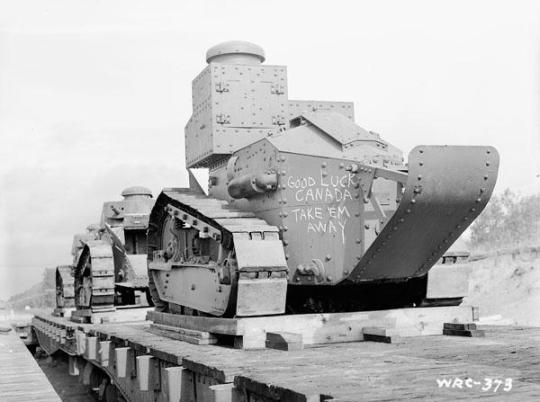
Facing a shortage of armored vehicles early into WWII, Canada bought 219 obsolete M1917 light tanks from the US in 1939. These tanks were worth little more than scrap and were only used for training.
22 notes
·
View notes
Text

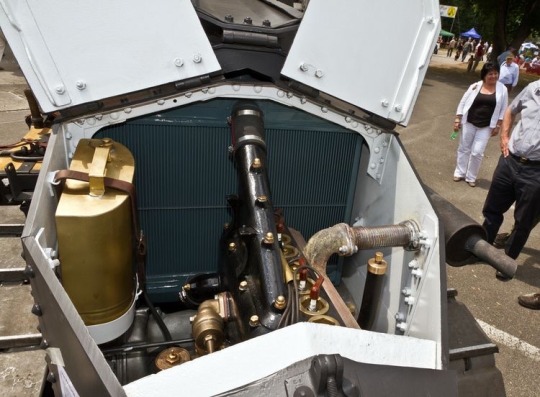
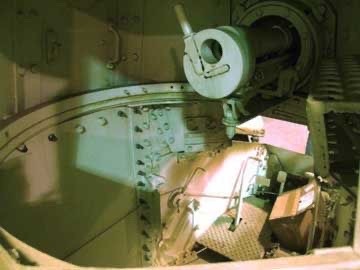

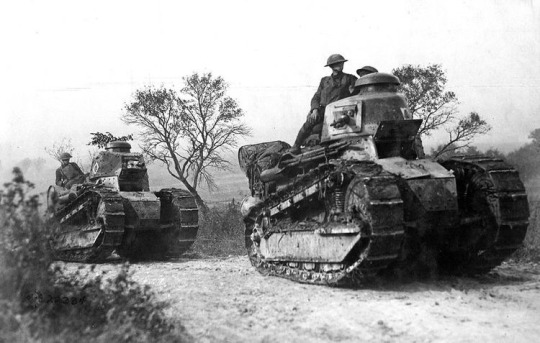
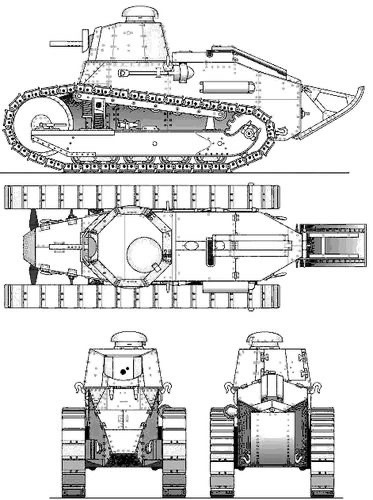
#m1917#m1917 tank#tank#tankers#us army#char#tahk#el tanque de guerra#kampfpanzer#inter war years#Ike#dwight d. eisenhower#camp Meade
26 notes
·
View notes
Photo

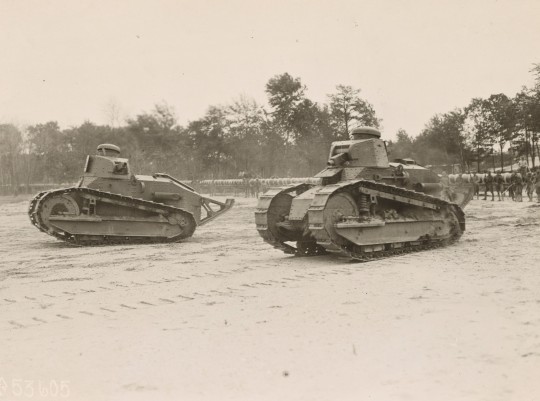
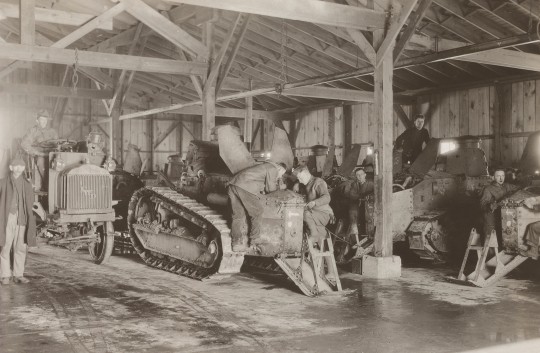
US M1917 Light Tank
The US Army entered the Great War with no tanks or experience in armoured warfare. When the American Expeditionary Force’s Tank Corps was formed in early 1918, they needed more tanks than France & Britain could provided and production of a licensed version of the Renault FT began in the US. The war ended before any of the M1917 Light Tanks saw action.
youtube
Originally over 4,000 tanks were ordered with the great offensives of 1919 in mind but as the war ended in November 1918, in total just 952 M1917s were produced. 375 of these are believed to have been equipped with 37mm M1916 cannons, while 526 armed with Marlin M1917 tank machine guns. The remaining 50 were outfitted as unarmed signal tanks.
The M1917 remained in service into the 1930s, making up the backbone of the early US tank forces. During World War Two some of the tanks remaining in store were shipped to Canada to assist training.
You can find more photos and a full blog over on the Armourer’s Bench website.
#History#M1917 Light Tank#Tank#WW1#WWI#World War One#US Army#Military History#Tanks#M1917 Tank#Renault FT#Light Tank#US Tank Corps#TAB#Military#guns#firearms#firearms history#tank history#gunblr#Great War#AEF
307 notes
·
View notes
Text

• M1919 Browning 30.Caliber Machine Gun
The M1919 Browning is a .30 caliber medium machine gun that was widely used during the 20th century especially during World War II, the M1919 saw service as a light infantry, coaxial, mounted, aircraft, and anti-aircraft machine gun by the U.S. and many other countries.
The M1919 was an air-cooled development of the standard US machine gun of World War I, the John M. Browning-designed water-cooled M1917. The emergence of general-purpose machine guns in the 1950s pushed the M1919 into secondary roles in many cases, especially after the arrival of the M60 in US Army service. The M1919 originally fired the .30 cal M1906 (30-06) ball cartridge, and later the .30 caliber M2 ball cartridge, contained in a woven cloth belt, feeding from left to right. A metal M1 link was later adopted, forming a "disintegrating" belt. Loading was accomplished by inserting the pull tab on the ammunition belt from the left side of the gun - either metal links or metal tab on cloth belts - until the belt-holding pawl at the entrance of the feed way grabbed the belt and held it in place. The cocking handle was then pulled back with the palm of the hand facing up, and then released. This advanced the first round of the belt in front of the bolt for the extractor/ejector on the bolt to grab the first cartridge. The cocking handle was pulled and released a second time. This removed the first cartridge from the belt, advanced the next round into position to be grabbed and moved the first round down into the chamber of the barrel ready for firing.
The gun's original design was as a water-cooled machine gun. When it was decided to try to lighten the gun and make it air-cooled, its design as a closed bolt weapon created a potentially dangerous situation. If the gun was very hot from prolonged firing, the cartridge ready to be fired could be resting in a red-hot barrel, causing the propellant in the cartridge to heat up to the point that it would ignite and fire the cartridge on its own (a cook-off). Gunners were trained to manage the barrel heat by firing in controlled bursts of three to five rounds, to delay heating. Most other machine gun designs were fired in the same way, even though most featured quick-change barrels and an open bolt, two features that make air-cooled machine guns capable of sustained fire, and features that the M1919 design lacked. When the gun was ready to fire, a round would be in the chamber and the bolt and barrel group would be locked together, with the locking block at the rear of the bolt. When the rear of the trigger was pivoted upwards by the operator, the front of the trigger tipped downward, pulling the sear out of engagement with the spring-loaded firing pin, allowing it to move forward and strike the primer of the cartridge. Except for the M1919A6, all other variants had to be mounted on a tripod or other type of mount to be used effectively. The tripod used by infantry allowed traverse and elevation. To aim the gun along its vertical axis, the adjustment screw needed to be operated. This allowed the gun to be pointed upwards or downwards, with free traverse to either side. The gun was aimed using iron sights, a small folding post at the front end of the receiver and a rear aperture sight on a sliding leaf with range graduations from 200 to 1,800 meters in 200 meter increments.
As a company support weapon, the M1919 required a five-man crew: the squad leader; the gunner (who fired the gun and when advancing carried the tripod and box of ammunition); the assistant gunner (who helped feed the gun and carried it, and a box of spare parts and tools); two ammunition carriers. The original idea of the M1919 was to allow it to be more easily packed for transport, and featured a light barrel and bipod when first introduced as the M1919A1. Unfortunately, it quickly became clear that the gun was too heavy to be easily moved, while at the same time, too light for sustained fire. This led to the M1919A2, which included a heavier barrel and tripod, and could be continuously fired for longer periods. The M1919A4 weighed about 31 pounds (14 kg), and was ordinarily mounted on a lightweight, low-slung tripod for infantry use. Fixed vehicle mounts were also employed. It saw wide use in World War II mounted on jeeps, half-tracks, armored cars, tanks, amphibious vehicles, and landing craft. The M1919A4 played a key role in the firepower of the World War II U.S. Army. Each infantry company normally had a weapons platoon in addition to its other organic units. The presence of M1919A4 weapons in the weapons platoon gave company commanders additional automatic fire support at the company level.
The M1919A5 was an adaptation of the M1919A4 with a forward mounting point to allow it to be mounted in tanks and armored cars. This, along with the M37 and the Browning M2 machine gun, was the most common secondary armament during World War II for the Allies. The coaxial M37 variant had the ability to feed from either the left or the right of the weapon, and featured an extended charging handle similar to those on the M1919A4E1 and A5. In the late 1950s, an M1919 designed for remote firing via a solenoid trigger was developed for use in the XM1/E1 armament subsystem was designated M37C. The US Navy later converted a number of M1919A4s to 7.62mm NATO chambering and designated them Mk 21 Mod 0; some of these weapons were employed in Vietnam in riverine warfare patrols.
With assistance from firearms engineers at Fabrique Nationale de Herstal,Belgium, the Model 1919 was completely re-engineered into the .30 caliber M2 AN (Army-Navy) aircraft machine gun. The .30 in M2 AN Browning was widely adopted as both a fixed (offensive) and flexible (defensive) weapon on aircraft. Aircraft machine guns required light weight, firepower, and reliability, and achieving all three goals proved a difficult challenge, with the mandate for a closed bolt firing cycle to enable the gun to be safely and properly synchronized for fixed-mount, forward-aimed guns firing through a spinning propeller, a necessity on many single-engined fighter aircraft designs through to nearly the end of World War II. The M2 also appeared in a twin-mount version which paired two M2 guns with opposing feed chutes in one unit for operation by a single gunner, with a combined rate of fire of 2,400 rpm. All of the various .30 M2 models saw service in the early stages of World War II, but were phased out beginning in 1943, as hand-trained rifle-calibre defensive machine guns became obsolete for air warfare.
The M1919 was manufactured during World War II by three different companies in the United States; Buffalo Arms Corporation, Rock Island Arsenal, and the Saginaw Steering Gear division of General Motors. In the UK, production was chiefly by BSA. Originally unit priced at $667 each, mass production lowered the price to $141.44. The Browning M1919 remains popular with civilian enthusiasts in the United States, though changes in 1986 to the National Firearms Act of 1934 (the US Federal law regulating private ownership of machine guns) prohibited the registration of new machine guns for sales to civilians, thus freezing the number of "transferable" machine guns in private ownership. The inflation of prices that followed, and the availability of parts from surplussed and scrapped machine guns, led to the development of semi-automatic versions of the Browning M1919.
#wwii#ww2#firearms#military equipment#military history#second world war#world war 2#world war ii#machine guns#browning#american history#aviation#tanks
187 notes
·
View notes
Link
$736 Band we are getting nothing.

If we were at least getting something for the amount we give corporations it wouldn’t be so bad, but they are just gorging at the trough. With the CIA handling throwing over Governments even the Marines won’t be needed.
“The Marines are eliminating all four tank battalions, including three active duty and one reserve battalion equivalent. The Marine Corps has fielded tanks for 97 continuous years, receiving six M1917 six-ton tanks from the U.S. Army in 1923. The cuts will remove approximately 200 M1A1 Abrams main battle tanks from the Marines' inventory.“
1 note
·
View note
Photo

US M1917 Light Tanks at Camp Meade 1919 [3400x1850] Check this blog!
4 notes
·
View notes
Photo
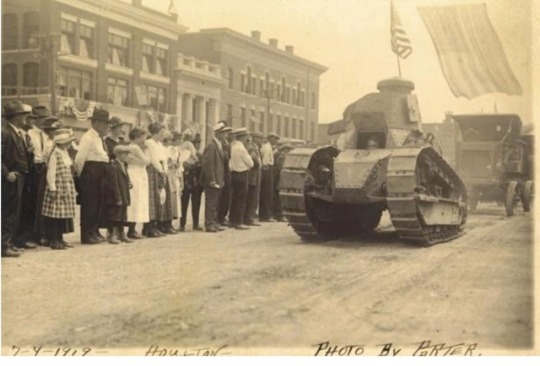
“A special tank”
July 4th 1919, Houlton, Maine -- This tank had to be in the July 4th parade because it was very special for the proud people of Maine. Indeed, it was a native of Maine, Alvin Orlando Lombard, the onetime ax-swinging Maine woodsman who designed and put into operation the first continuous tread logging tractor, one of the granddaddies of tractors and US Army tanks used in WW1.
His hauler could pull up to twenty sleds loaded with pulpwood across the 3,000-foot interval between Eagle and Chamberlain Lakes, in the Allagash Region. Affectionately named "Mary Ann," it was a series of two-wheeled dollies bolted every ten inches to the circulating 8,000-foot cable; and could move 500,000 feet of pulpwood in ONE DAY!
Sources: A Salute to Maine -- The Popular Science Monthly, Volume 102
Photo: 4th of July parade in Houlton, Maine, admiring the M1917 tank, which used the first successful caterpillar tread on the steam log hauler invented by Maine native Alvin O. Lombard – Maine Historical Society
12 notes
·
View notes
Note
If you were able to arm a rifleman during, let's say the 1930s with a rifle and a sidearm, what would you use? No boundaries except it has to be of the time period.
Because I’m bored and I wanted to go whole hog; here’s something you didn’t ask for, before something you did.
This is how I’d set up squad-level groups;
1 Loader; Carries SMG, Pistol, Ammo for LMG/Rifle and SMG/Pistol
1 Gunner; Carries LMG, Pistol, Ammo for LMG/Rifle.
3-6 Riflemen; Carries Rifle, Grenades, Ammo for LMG/Rifle.
1 Radio; Carries SMG, Radio, ammo for SMG/Pistol.
1-3 Specialists; Role and situation dependent, SMG, DMR, Anti-Tank, etc.
The key goal would be to have squads which can act with minimal communication or oversight from command, while reporting activity, with the LMG as the likely heart of the squad (providing suppressing fire, etc).
Individual squads would be assigned into battlegroups of 3-10 squads with commanding officers and radio/comms to manage and direct low level forces, perform actions on their own initiative, and transmit those actions up the chain. Armor, artillery and the like are considered as squads of their own, either as part of a mechanized infantry battlegroup or their own dedicated battlegroups.
These battlegroups should be given general objectives from their own commander, and be advised by their commander on previous engagements, and any relevant intel. Lateral communication between battlegroups in the same theatre is key, with battlegroups commanders incentivized and trained to accept intel and advise from their colleagues.
The basic battle plan would be to ratchet forces forward in places of weakness, establish dug-in positions where possible, and continue with the intent of encircling the enemy, either through a mix of feigned retreats and flanking maneuvers or direct encirclement and bombardment.
Only around 5-10% of the enemy needs to face casualty to negate their collective fighting power, and keeping the “heads” of my own forces small, fast, and independent reduces the effect of attrition on my own forces and lets them act and react quickly.
I’d do my best to cycle commanders out, since they’d see a LOT of battle fatigue if losses are high.
But yeah, with my own lack of knowledge of 1930′s guns,
Rifle M1 Garand,
Pistol the Browning Hi-Power,
LMG maybe BAR or some kind of modified (less cumbersome) M1917,
SMG being uuh fuck if I know, something in 9mm.
In reality I don’t see the rifleman as being as useful in engagement as the LMG in the era, they’re there to carry the LMG ammo and shoot anything the LMG misses/fails to suppress.
#alpine-strider#gunblr#history#inb4 someone tells me why I would have done horribly and lost the war#I'm not a commander
2 notes
·
View notes
Photo

Renault FT tanks decommissioned and used as farm tractors, Washington DC, circa September 1923
After a large-scale conflict, a military is often left with a surplus of weapons and vehicles. These items usually end up in storage, are sold to other countries, scrapped (many FTs and M1917 were scrapped after the war), or are converted in some way to perform peacetime duties. America was able to keep 231 Renault FTs loaned to them during the Great War by France as a way to pay off some war debt. Decommissioning the Renault FT and turning it into an agricultural tractor was the fate of a handful of the remaining FTs in the United States.
0 notes
Photo

An American M1917 Browning machine gunner takes time out for a pipe smoke during a lull in the Ardennes. #bastogne #ww2weapons #ww2history #battleofthebulge #ww2 #warpics #warhistory #worldwar2 #worldwar #worldwarii #worldwartwo #usarmy #wwii #wwiimemorial #bandofbrothers #currahee #tanks #ww2tanks #history #war #veterans #relics #metaldetecting #historian #airborne #1944
#relics#1944#historian#bandofbrothers#history#battleofthebulge#worldwar#worldwar2#war#tanks#usarmy#bastogne#ww2tanks#veterans#ww2#warpics#ww2weapons#warhistory#worldwarii#wwiimemorial#wwii#airborne#worldwartwo#metaldetecting#ww2history#currahee
28 notes
·
View notes
Text

The M1917 Light Tank was the first official tank for the US Army.Weight: 7.25 Tons
Crew: 2 – Commander/Gunner and Driver
Armament: Turret: 37mm main gun or .30-caliber machine gun
Armor Width: .25”-.60”
Engine: Buda HU Modified Liquid Cooled 4 Cylinder Inline Piston 42 hp
Speed: 5.5 mph
Number Produced: 952
#tank#tankers#museum#static display#us army#air planes#tahk#el tanque de guerra#kampfpanzer#m1917#m1917 tank#big red one#first infantry division
20 notes
·
View notes
Photo

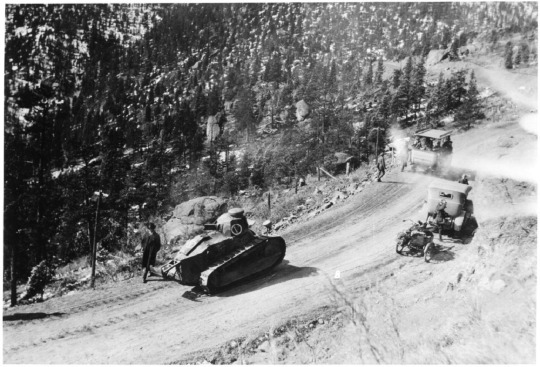
The Tank That Climbed A Mountain
In April 1919, a lone US-built M1917 light tank climbed over 11,000 feet up a mountain in Colorado. In this week’s TAB video we look at the story of this impressive feat!
youtube
Check out the accompanying blog for this video over at www.armourersbench.com.
Thanks for watching guys, I hope you’re all staying safe and well! - Matt
#History#Military History#Pikes Peak#Victory Loan Drive#Rocky Mountains#M1917 Light Tank#M1917 Tank#TAB#The Armourers Bench#Video#WW1#World War One#Great War#Tanks#Tank#US Army#US History#Liberty Loans#interwar period
90 notes
·
View notes
Photo

An M1917 tank and U.S. Army soldiers on patrol in Lexington, Kentucky to keep peace after a large mob tried to lynch Will Lockett, a black man who is on trial for his murder of a young white girl (February 10/11, 1920) #HistoryPorn https://ift.tt/2Rvfmyc
0 notes
Text
Guns of the Indiana War Memorial (PHOTOS)
The Indiana World War Memorial, modeled after the Mausoleum of Halicarnassus, was built after World War I with General John “Blackjack” Pershing setting the cornerstone in 1927. (Photos: Chris Eger/Guns.com)
While in Indianapolis for the 148th National Rifle Association’s Annual Meeting, Guns.com had to make sure to visit the nearby Indiana War Memorial.
Located inside 25 acres of monuments, sculptures and statues downtown, the state-owned Memorial and museum honor the deeds and accomplishments of Indiana veterans in warfare going back to the Colonial-era.
Revolutionary War weapons such as British Brown Bess and French 1777 Charleville muskets along with Pennsylvania rifles pop up early in the self-guided tour, which is laid out chronologically.
Followed by the guns of the War of 1812 such as the 1795 Springfield and 1801 Harper’s Ferry rifle.
Besides the 30,000 sq. ft. military museum, the IWM has numerous war flags carried by state volunteer regiments in the Civil War, such as this one of the 19th Indiana, part of the renowned “Iron Brigade of the West” that fought at Antietam, the Wilderness, and Gettysburg, among others.
Captured German Great War-era weapons include a Kar88, M71 Jaeger rifle, Z Rifle, and Steyr M95, as well as rare pioneer-style, saw back bayonets.
And a German MG08/15 light machine gun, complete with its flash hider and a 100-round Trommel drum magazine. While “light” the MG08/15 still weighed 42-pounds without the ammo but could be operated by a single soldier.
As well as a Spandau Maxim MG08, fresh from the trenches of the Western Front. These water-cooled 8mm heavy machine guns could fire as many as 2,000 rounds non-stop before they boiled dry and the jacket had to be refilled by the five-man crew. This earned the gun a reputation as “the devil’s paintbrush.”
American WWI machine guns include an M1916 Colt-Browning Potato Digger and an M1917 Browning water-cooled heavy gun, both in .30-06.
Other WWI weapons include a Spanish M93, Belgian M77, Swiss Vetterli M78, American-made P14 Enfield, and U.S. M1917 Remington Enfield. Remington later used the M1917 design as their Model 30.
U.S. infantry weapons from World War II and Korea include M1 Garands and Carbines, the M1918 BAR, M1903 Springfield, M1 Thompson, and M3 Grease Gun. Also note the M44 Mosin and PPSh, of Korean War era
WWII German arms range from the MG42 machine gun and P08 Luger to an STG44, MP34 burp gun and K43. The Walther Karabiner 43 was often referred to as “Hitler’s Garand” as it was a 10-shot semi-auto chambered in 8mm Mauser. Some 400,000 K43s were made during the war.
A dedicated Marine Corps display shows off not only the BAR, Garand, and M1903 sniper but also light mortars and a flamethrower, key to rooting out pockets of Japanese resistance in the “green hell” jungles of South Pacific atolls.
Japanese weapons from WWII include Arisaka carbines and rifles alongside Nambu light machine guns and a “Knee” mortar which you shouldn’t actually fire from your knee unless you are a fan of physical therapy.
The IWM has a loaned M1911 Colt .45 that has a serial number that dates to 1919. It was carried in WWII by Sgt. Leo Thompson of Salem, Indiana when he was killed in the Philippines in 1945. Recovered by his brother-in-law,
Thompson had personalized his gun by inserting a 1944 Australian shilling in the grip.
Both the M3 Grease Gun and M1 Garand also have special places of honor at the IWM due to the fact they were made in Indiana, with the M3 cranked out exclusively in Anderson in WWII and the International Harvester version of the M1 made in Evansville during Korea.
Heavy weapons on display include several light and medium artillery pieces
Like this Vietnam-era M40A1 106mm recoilless rifle. A cool thing about this anti-tank gun is the 50-caliber M8C spotting rifle mounted on top, which helped the crew hit their targets.
Speaking of Vietnam, there is a comprehensive display with an M79 Bloop Gun, M60 general purpose machine gun, M16A1, AK, and M72 LAW
There is also an AH-1 Cobra gunship with its 3-barreled 20mm gun and rocket launchers
More modern captures include an Iraqi LMG and RPG round. In another room is a plastic-covered chair that came from one of Saddam’s palaces.
The Indiana War Memorial is open Wednesday-Sunday from 9AM to 5 PM and is free to the public.
The post Guns of the Indiana War Memorial (PHOTOS) appeared first on Guns.com.
from Guns.com http://bit.ly/2PQtDTQ
from Blogger http://bit.ly/2DTmNbx
0 notes